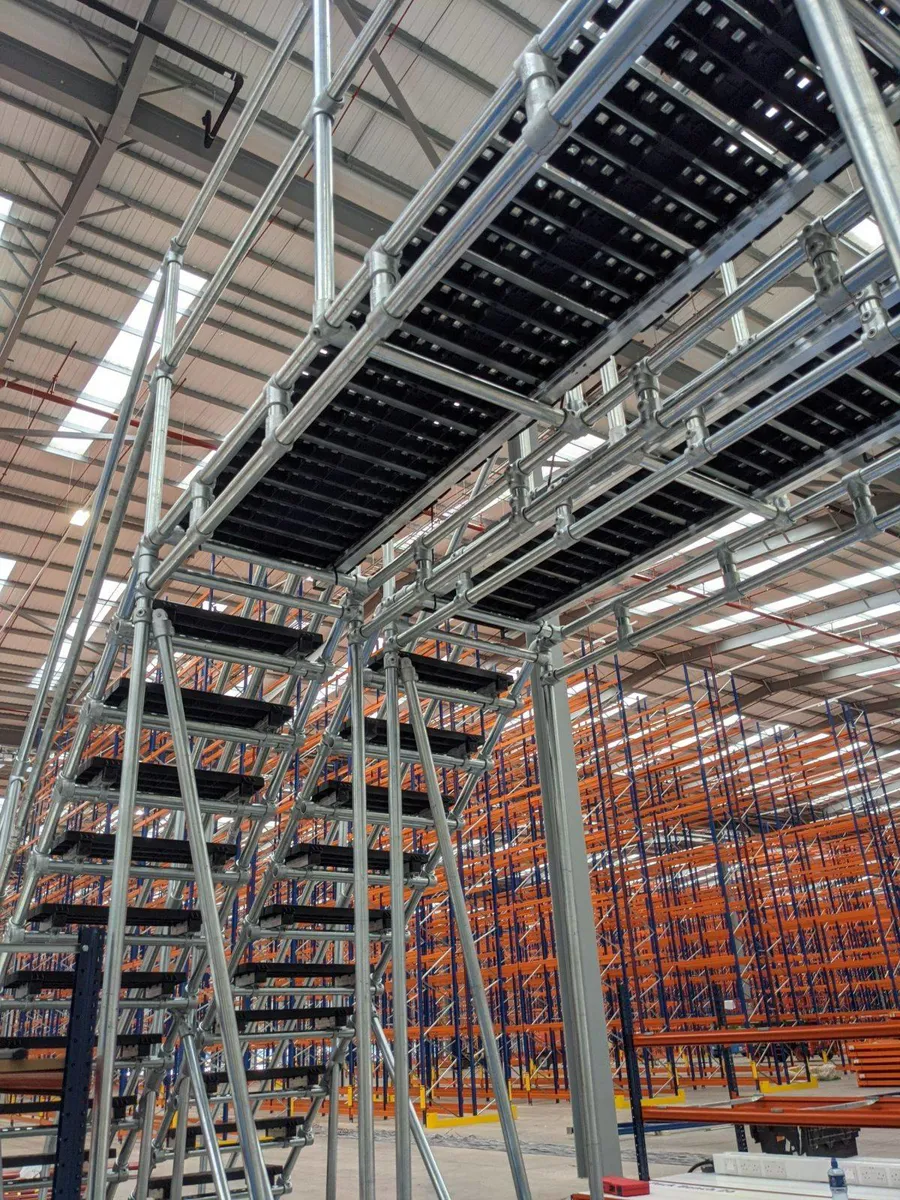
You are visiting the Canada Kee Safety website from United States. Would you like to go to the United States site?

Looks can be deceiving. A house with a pristine lawn and garden could be a mess inside, in sore need of decluttering. A home with a spotless interior may have weeds growing out of control and paint peeling off the shutters.
Safe access cannot be deceiving. In the rigorous environment of a manufacturing plant, safety and facility managers must pay attention to both the interior and exterior of the building to ensure effective and compliant fall protection.
Yet, Canadian fall protection for manufacturing safety often centers on Personal Protective Equipment (PPE). What is often overlooked is providing safe access to elevated and hard-to-reach areas. Failure to do so can result in a multitude of injuries and lost production.
Fortunately, guardrails, safety gates, maintenance access platforms, rooftop walkway systems, and rigid rail tracks can all help provide industrial maintenance safety for Canadian factories, inside and out.
While most facilities address fall hazards during production tasks, it can be easy to neglect areas where workers access elevated machinery, catwalks, rooftops, or mezzanines. Furthermore, servicing HVAC units, replacing lighting, loading/unloading, or performing routine maintenance on tanks, conveyors, or fans often require improvised climbing or unguarded walking paths.
These shortcuts can lead to real dangers, which is why modular, engineered safety access solutions should be implemented to safeguard workers and maintain smooth, efficient plant operations.

Guardrails are fundamental for fall protection in manufacturing as they are “passive” systems that safeguard workers without the need for special equipment or training. Modular railing systems can be customized to provide an effective barrier to match the site-specific hazard. Constructed from lightweight aluminum or galvanized steel for strength, durability, and corrosion resistance, these safety railings are easy to install or reconfigure and do not require welding or drilling.
To comply with safety regulations in Canada, guardrails must be:
Guardrails should be installed wherever there is a risk of falls, collisions, or unauthorized access.
INTERIOR:
EXTERIOR:

In many instances, an industrial safety gate is an integral component of a guardrail system to provide continuous protection with controlled access. Two mainstay types of aluminum and galvanized steel factory safety gates include:
Feature a spring-loaded mechanism to close immediately once the worker passes through. They are easy to install, can fit square or round surfaces, and can be cut-to-size on-site. Available in single-width, double-width, and full-height sizes.
Internally, safety gates protect openings in guardrails near stairs, ladders, loading, and restricted zones. Externally, self-closing gates are required for roof hatch railing systems, which clamp to roof hatches to provide safe egress to and ingress from the rooftop.Provides safe loading/unloading of pallets between levels, such as a mezzanine, without removing fall protection for the workers. Available in standard, double-width, double-depth, and full-size models.

A slip-resistant walkway for rooftops enables workers to navigate along a designated path that avoids obstacles and provides safe access to HVAC units and other mechanical equipment. Constructed of glass-reinforced nylon treads set in aluminum or galvanized steel frames for stability, roof walkways protect the roof’s surface from heavy foot traffic and keep workers away from slippery surfaces.
The treads are self-draining to prevent the accumulation of snow, ice, or rain and feature modular components for design flexibility. Walkway systems are easy to install and can also be adapted for roof angles up to 35 degrees.
Although these strong, durable, corrosion-resistant systems are primarily intended for rooftops, they can be used inside the manufacturing plant for catwalks and other elevated areas to provide safe access. Walkways can be integrated with guardrails for additional fall protection.

An ergonomic combination of walkway treads with aluminum or galvanized steel frames and guardrails, modular safety platforms for factories in Canada provide access to elevated machinery, process lines, and storage areas inside the plant and building services equipment outside the facility, including the rooftop. Since workers enjoy full freedom of movement on work platforms, they are safer and more efficient to use than ladders or makeshift scaffolds.
In areas where guardrails or platforms are not feasible, a modular rigid rail allows mobility and continuous fall arrest along elevated work areas inside or outside a facility. Rigid rail is a track-and-trolley system used with a proper harness, lanyard, and self-retracting lifeline. Ideal for vehicle maintenance and confined spaces, rigid rail is easy to install or reconfigure, and it will stop a fall within a short distance.
Safe access inside and outside of manufacturing plants for production, maintenance, inspections, repairs, and other tasks is a strategic investment in worker safety and productivity. By installing guardrails, safety gates, anti-slip walkways, work access platforms, and rigid rail systems, companies can address often-overlooked hazards to protect their workers and comply with Canadian safety regulations.